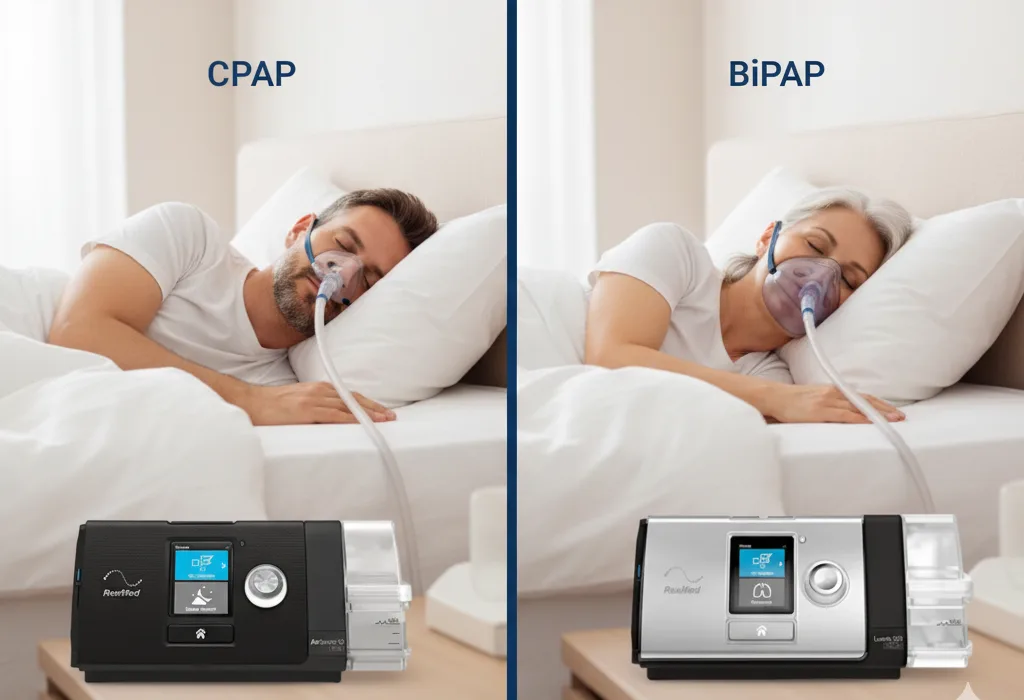

Sleep apnea can make your nights restless and your days exhausting. But with the right home sleep apnea treatment, you can enjoy restful sleep and better health. Two of the most effective solutions are CPAP (Continuous Positive Airway Pressure) and BiPAP (Bilevel Positive Airway Pressure) machines.
Let’s explore how these devices work, how to set them up safely, and how to maintain them for maximum comfort — right from your home.
Both CPAP and BiPAP are non-invasive breathing support systems designed to keep your airway open during sleep:
💡 Key Difference: CPAP = constant pressure. BiPAP = two alternating pressures for easier breathing.
Regular use of CPAP or BiPAP can make a huge difference in your sleep quality and overall health:
✅ With consistent use, most people notice improvement within just a few nights.
Follow these simple steps to get started safely:
💬 Pro tip: Wear your mask for short periods during the day to get comfortable before overnight use.
Keeping your CPAP or BiPAP clean ensures effective therapy and prevents bacteria buildup.
Daily care:
Weekly care:
Every 3–6 months:
🧼 Tip: Let all parts dry completely before reassembling to avoid moisture buildup.
Even with home therapy, keep regular contact with your sleep specialist.
You should reach out if you experience:
Your doctor may adjust your pressure settings or recommend a different mask for better comfort and results.
No. These devices require medical evaluation and prescribed pressure settings to ensure safe and effective treatment.
It depends on your condition. CPAP works well for mild to moderate sleep apnea, while BiPAP is better for severe cases or people who struggle to exhale against continuous pressure.
Yes, absolutely — when used correctly. Regular cleaning, correct pressure settings, and proper fit make home treatment both safe and effective.
Skipping therapy can cause snoring, fatigue, poor sleep quality, and low oxygen levels to return quickly. Consistency is key to success.
These machines manage sleep apnea by keeping your airway open during sleep, but they don’t cure it. Lifestyle changes like weight management, regular exercise, and quitting smoking can help improve long-term outcomes.
Using a CPAP or BiPAP machine at home is one of the most effective ways to treat sleep apnea naturally and comfortably. With the right setup, maintenance, and medical guidance, you can reclaim your nights and your health.
✨ Ready to take control of your sleep health?
👉 Explore CPAP and BiPAP options for effective home sleep apnea care
and discover how Healthy Jeena Sikho can help you live better, sleep deeper, and breathe easier — every single night.